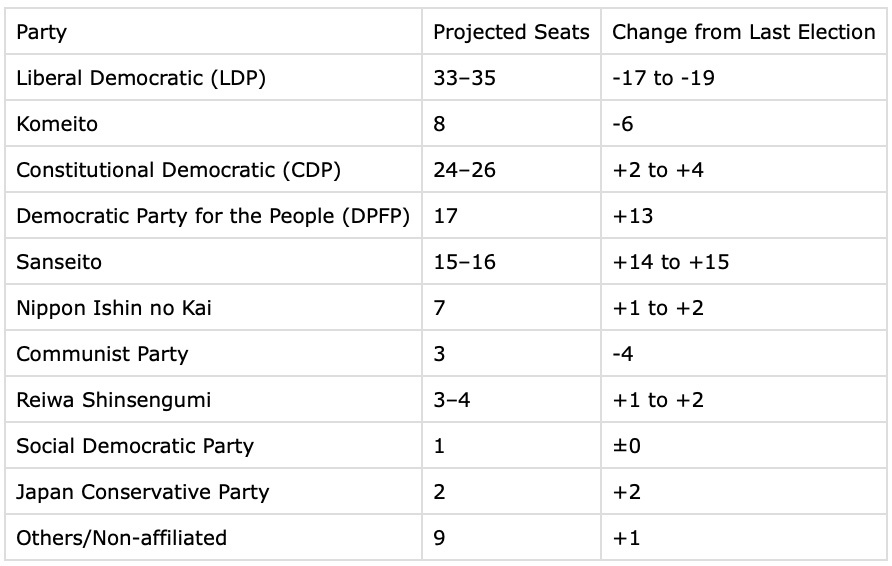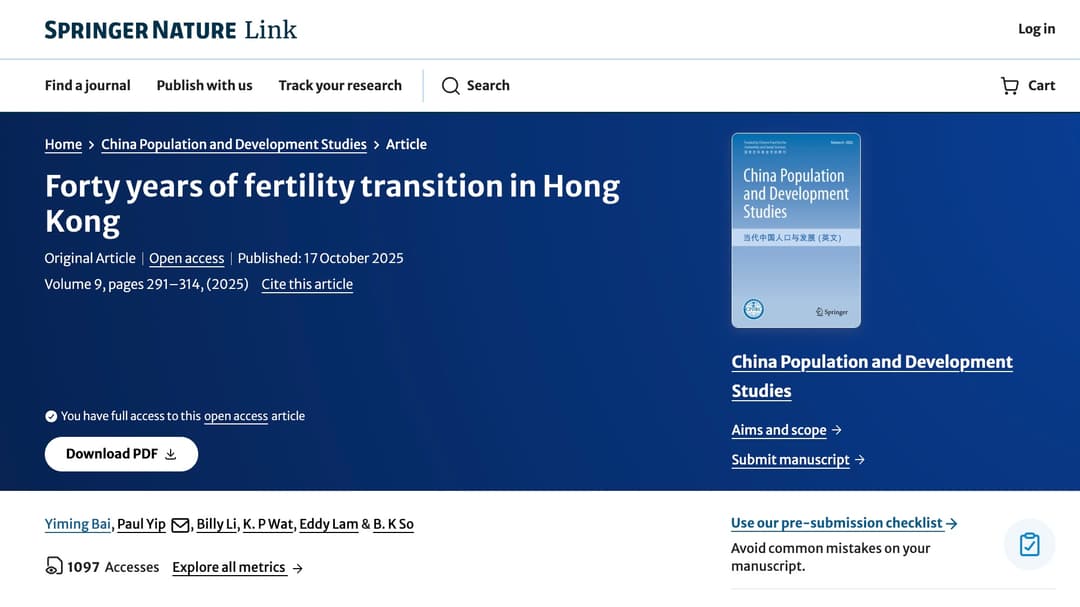Global News
Breaking: Ruling Coalition Projected to Lose Upper House Majority in Japan’s 2025 Election
Ruling Coalition Falls Short of Majority as DPFP and Sanseito Make Major Gains
4 MIN READ
By Matthew H.
Published:
| Updated:
Breaking News: Historic Defeat for LDP, Ruling Coalition Falls Short of Majority as DPFP and Sanseito Make Major Gains – Japan’s 2025 House of Councillors Election
Overview
Japan held its 27th House of Councillors election on July 20, 2025. The polls closed at 8:00 PM, marking one of the most consequential elections for Prime Minister Shigeru Ishiba’s administration and the ruling coalition, which lost its majority in the upper house. For the first time since World War II, both the House of Representatives and the House of Councillors now have a minority government, signalling a dramatic turn in Japanese politics.
Key Election Outcomes
Liberal Democratic Party (LDP): Suffered a historic loss, projected to secure only 33–35 seats. This is below the 36-seat record low set in 1989, and 19 fewer than in the previous election cycle.
Komeito: The LDP’s coalition partner, also saw a sharp decline, expected to win around 8 seats, 6 down from last time.
The LDP-Komeito alliance is projected at just 41 seats for this election (far below the 50-seat goal), and together with their pre-existing seats, will control only 118 seats—well short of the 125 required for upper house majority.
Prime Minister Ishiba’s position is now in question as both chambers of parliament are likely to see minority governments—a postwar first.
Opposition Gains and Party Standings
Constitutional Democratic Party (CDP): Gained momentum, set to win 24–26 seats (up from its previous standing), making it the largest opposition bloc.
Democratic Party for the People (DPFP): Emerged as one of the largest winners, projected to secure 17 seats, which is 13 more than before.
Sanseito Party: Achieved a remarkable surge, with an estimated 15–16 seats, up 14–15 from the previous election.
Japan Innovation Party (Nippon Ishin no Kai): Saw moderate gains, increasing by 1–2 seats to win 7 total.
Reiwa Shinsengumi: Small but steady rise, now holding 3–4 seats (up 1–2).
Japanese Communist Party (JCP): Only opposition party to decline, dropping to 3 seats (down 4).
Social Democratic Party (SDP): Maintains a single seat.
Japan Conservative Party: Makes its debut with 2 proportional representation seats.
Other/Miscellaneous: Various minor parties and unaffiliated candidates are estimated to collect around 9 seats in total, including one for Team Mirai through proportional representation.
Table: Projected Seats by Party

Impact on Governance
The upper house has 248 seats. A majority requires 125. LDP and Komeito will combine for only 118 seats, confirming a loss of control for the ruling coalition.
In the House of Representatives (lower house): LDP and Komeito’s combined total only reaches 220 out of 465—also a minority.
This marks the first time since the war that the ruling parties hold minorities in both chambers.
The focus now turns to whether Prime Minister Ishiba will remain leader, and how parties will seek new coalitions or arrangements to govern effectively.
Constituency Breakdown
There are 32 single-seat districts (one-member constituencies). LDP is projected to win only 6, while the opposition or independents will likely claim 17. The remaining 9 are in tight contention.
Voter Turnout & System Notes
Over 104 million eligible voters participated; early voting reached a record 21.4 million.
Voters cast two ballots: one for district candidates and one for proportional representation.
Many observers note that public concern about rising living costs, demographic pressure, and disillusionment with traditional politics contributed to the shake-up.
What’s Next?
Final results are expected overnight, but the main trends and shocks are clear: the ruling parties face a dramatic loss, strong opposition gains, and significant political uncertainty ahead. Calls for leadership change and new alliances are expected in the coming days.
This is a pivotal moment in Japan’s postwar political history, with ramifications likely to affect both domestic policymaking and foreign relations in the months and years ahead.







